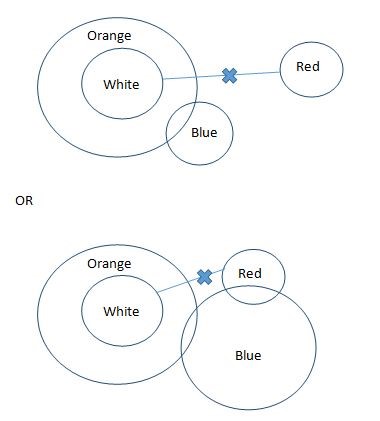Question
Statements: No red is white. All white are
orange. Some Orange are blue. Conclusions: I. No red is blue. II. No orange is red. III. All orange being white is a possibility. IV. At least some blue are red. In each question below are given some statements followed by some conclusions numbered I, II, III and IV are given. You have to take the given statements to be true even if they seem to be at variance with commonly known facts and then decide which of the given conclusions logically follows from the given statements, disregarding commonly known facts.Solution
No red is white(E) + All white are orange ⇒ Some oranges are not red(O*). Hence conclusion I, II and IV do not follow but conclusion I and IV will form a complementary pair. Hence either conclusion I or IV follow. All white are orange(A) ⇒ Conversion ⇒ Some orange are white(I) ⇒ Probable conclusion ⇒ All orange being white is a possibility(A). Hence conclusion III follow. ALTERNATE SOLUTION: Relevant Possibilities 
The Chairperson and Chief Executive Officer FSSAI have appointed by_____
Multitier farming is practised in which State?
The World Trade Organization helps in facilitating this trade by providing a framework for negotiating the various trade agreements. Its headquarter is ...
Movement of plant towards sunlight is known as
Harmful substance present in Urea is
Which instrument is used to determine the adulteration of water content in milk?
Tomato leaf curl is caused by
Which of the following is rightly matched?
Adoption of new resource conserving technologies in Agriculture will have to
Who is the proponent of the Lime potential concept?


